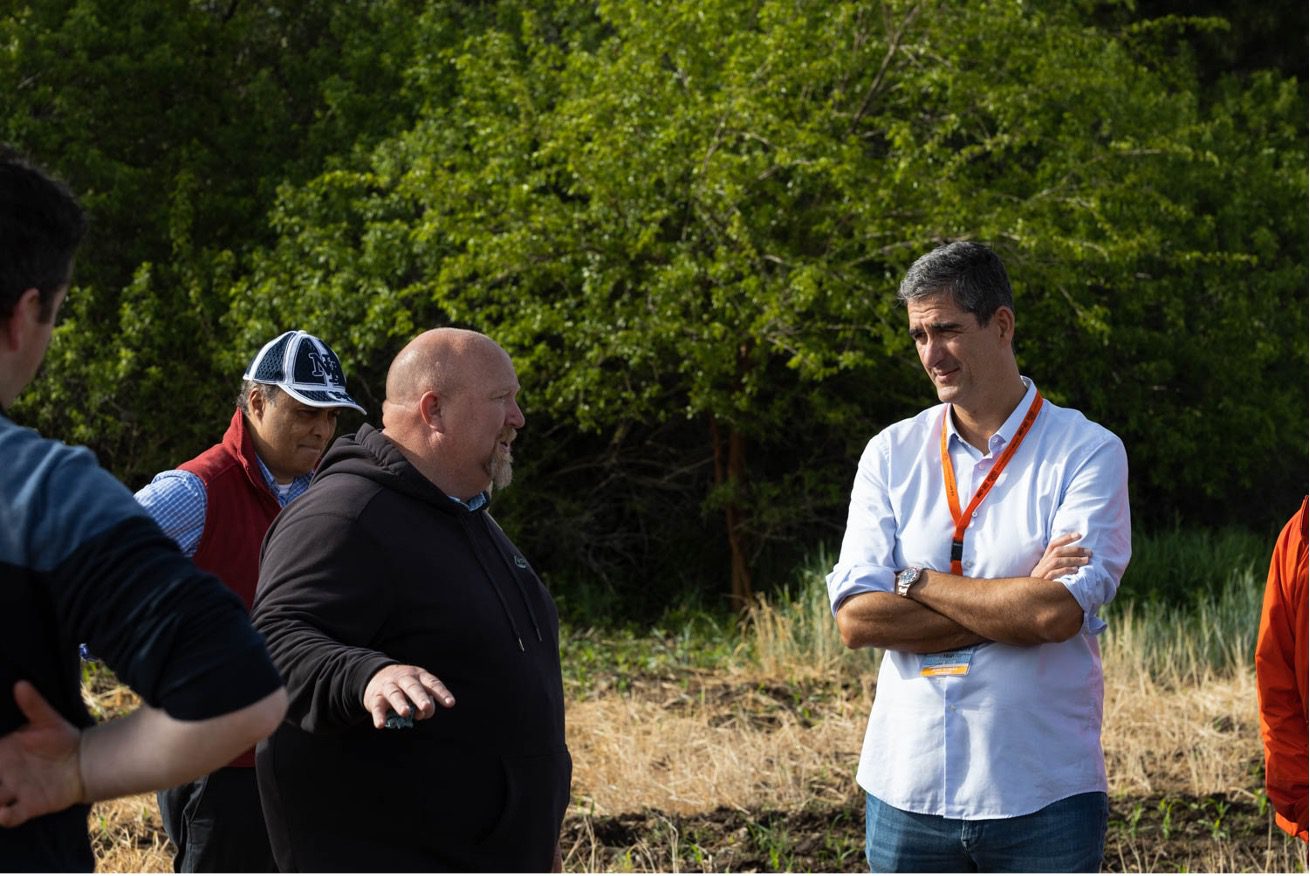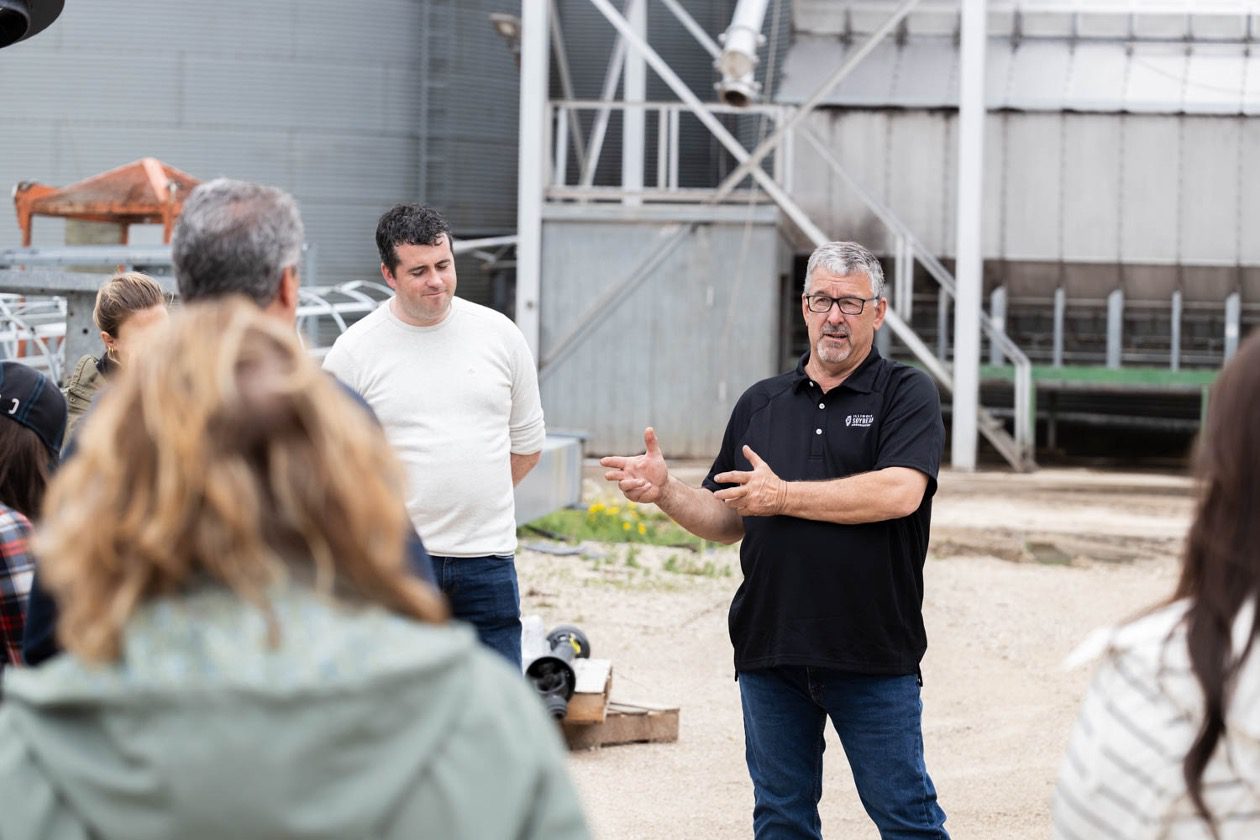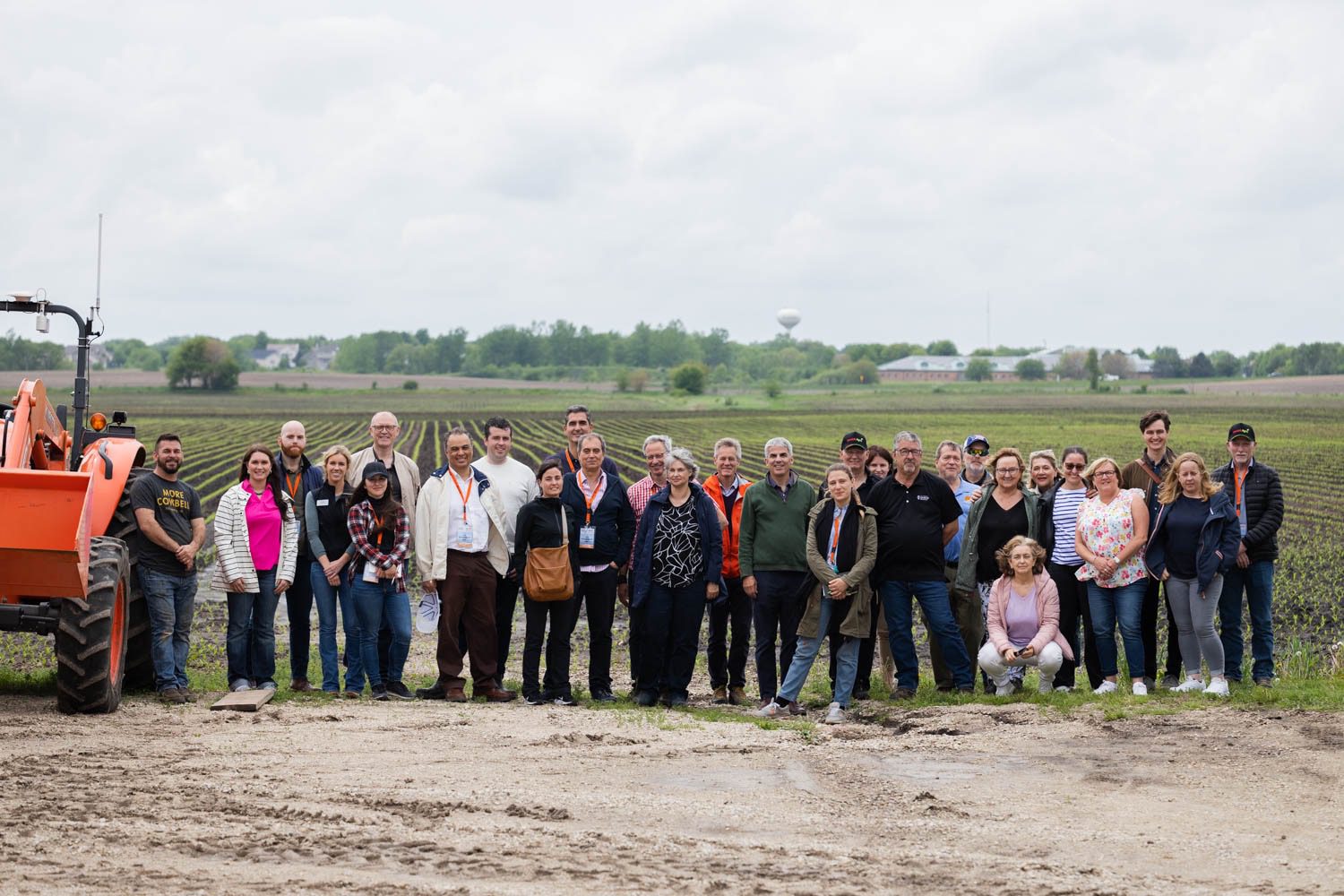U.S. Soy growers strive to be ultimate stewards of the land. Why? Because efficiency and conservation practices not only help preserve the planet’s resources for future generations, but also provide economic stability on their farms, and for the industry as a whole. This commitment to sustainability is showcased by investments to increase the sustainability of their operations and improve sustainable outcomes on their multi-generational family-run farms. Desired outcomes include better water quality, soil health, pollinator habitats, lower greenhouse gas emissions and more.
Stewardship remains a priority on U.S. Soy growers’ operations through regularly employed strategies like conservation tillage, crop rotation and cover crops to maintain soil health and maximize the consistent quality of their harvests. This commitment to sustainability is matched by a desire to share these practices with customers around the world.
International buyers from the Americas and the EU recently dove into the sustainability of U.S. Soy through U.S. Soybean Export Council’s (USSEC) trade team efforts.
EU Sustainability Trade Team
From Iowa to Illinois, international soybean industry stakeholders visited several farms and a feed mill, learning more about U.S. Soy production practices and sustainability initiatives along the way.
Four U.S. Soy farmers across Illinois and Iowa welcomed the trade team to their family farms.
The first farm visit was the operation of Ron Heck in Perry, Iowa. His great grandfather settled very close to his current home, and they have been farming the land ever since. Heck’s land was flat, and the farm suffered severe damage from the August 2020 Midwest derecho. Their perseverance showcased just a few of many challenges U.S. Soy farmers overcome year after year.
Next, the trade team headed to Robb Ewoldt’s farm near Davenport and the Mississippi River in the rolling hills of eastern Iowa. Ewoldt shared that U.S. farmers are well aware of their contribution to global food security. This responsibility influences sustainable priorities on most U.S. Soy farms.

The third farm was Brad Temple’s in Serena, Illinois, and the final farm visited was Steve Pitstick’s in Maple Park, Illinois. Eugene Philhower, USSEC’s Regional Representative for Northern Europe said that in addition to demonstrating soybean producers’ commitment to the principles of sustainability, the trade team visits attempted to show European guests that no two farm operations are alike.
 “While they all grow soybeans and corn, the farms are all different, from the soil type to the micro-climate to the ownership structure and how they market,” Philhower said. The diversity of operations showcased a shared goal: sustainability across the industry.
“While they all grow soybeans and corn, the farms are all different, from the soil type to the micro-climate to the ownership structure and how they market,” Philhower said. The diversity of operations showcased a shared goal: sustainability across the industry.
“Following the many farm visits, we can see the excellent work being done to promote sustainable agriculture and the commitment by farmers to produce high quality food to an incredibly high standard in a sustainable way,” John Coleman, president of the Irish Grain Trade Association, said.

The EU trade team also stopped by Iowa State University (ISU) in Ames, where Dr. Charlie Hurburgh of the Agricultural and Biosystems Engineering Department welcomed the group. Dr. Hurburgh provided an overview of the uniquely American land grant university system, going back to the 1860s when Iowa State University was one of the first universities founded that focused on the relationship between research and extension, as well as the importance of bringing innovation and information to agricultural producers sustainably.
Tony Ewing of the ISU Kent Corporation Feed Mill and Grain Science Complex joined Dr. Hurburgh in leading a tour of the complex site, which is still under construction and anticipated to be up and running later in 2022. The model feed mill is unique in that it will be entirely run by students and completely funded by private sector sources. The mill will take inputs from ISU farms and provide customized feed for research for various livestock within the University system.

“Even though the ISU feed mill is not yet operational, I really appreciated the tour,” Krystina Spacilova, Policy Advisor for the European Feed Manufacturing Association (Fefac) and trade team participant, said. “I wasn’t the only one who was amazed by the fact that the project and facility is being built with industry donations without any government support. And it will be run only by students. I would only wish to be a student again, being able to take the Feed Technology minor at ISU.”
Americas Sustainability Trade Team
International customers from the Americas region visited Alpers Brothers Farm in central Missouri before heading to the Missouri Soybean Association and Missouri Soybean Merchandising Council’s Bay Farm Research Facility and Center for Soy Innovation.
From cereal rye cover crops to no-till technology, Robert and Nathan Alpers showcased sustainability in the field and innovation on their farm.
“Our customers want to know they have a consistent supply of U.S. Soy now and into the future,” Robert Alpers said. “Sharing our sustainability methods is one way to guarantee to them that we are stewarding our resources through innovation and continuous improvement for future generations of soybean farmers to come.
The group was searching for reassurance that our practices will ensure they have a consistent supply of soybeans for decades to come,” he added.
“When I think of sustainability I think about the soil and what we can do to make it better for the future. When they talked about sustainability, they were concerned if we could furnish them with soybeans in the future.”
After experiencing the farm firsthand, some for the first time, the group had the opportunity to learn about sustainability practices, research, soybean variety development, new uses and more from the team at Missouri Soybeans. From the Bay Farm Research Facility where traits like Soyleic are developed to the Center for Soy Innovation, customers experienced U.S. Soy’s consistent innovation in the field and efficiency beyond it.
Get an inside look at their visit below.
This article is partially funded by U.S. soybean farmers, their checkoff, and the soy value chain.